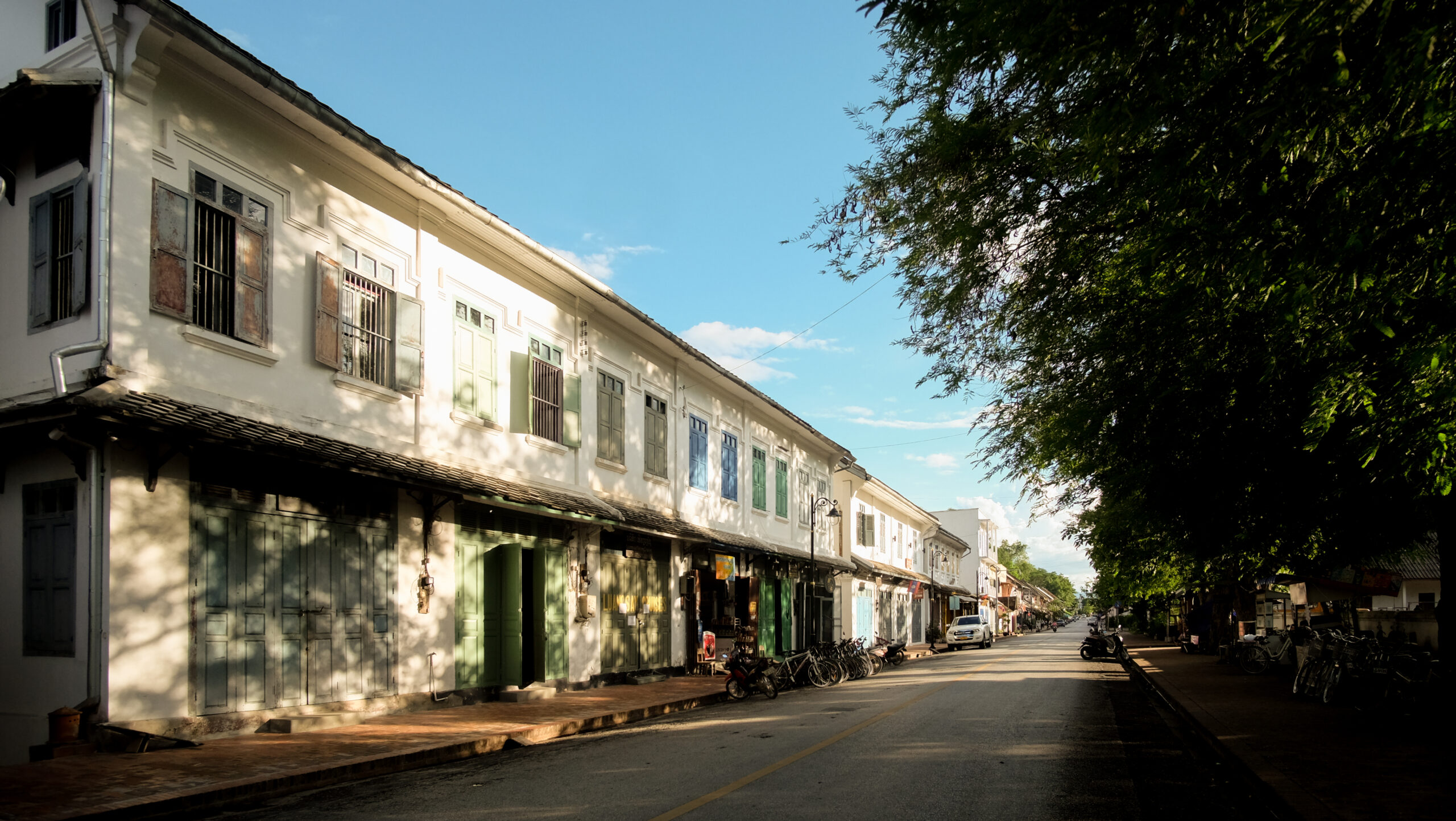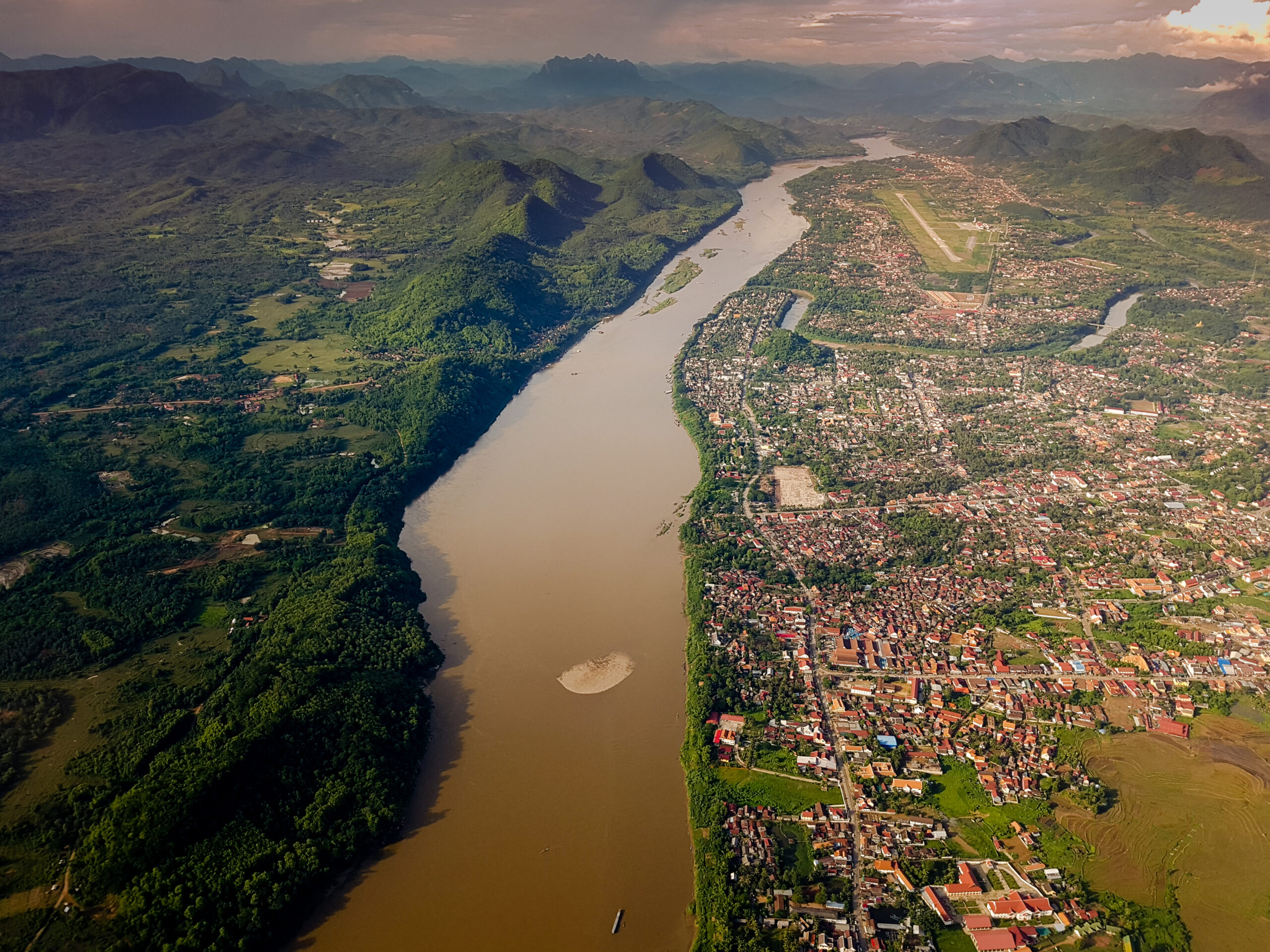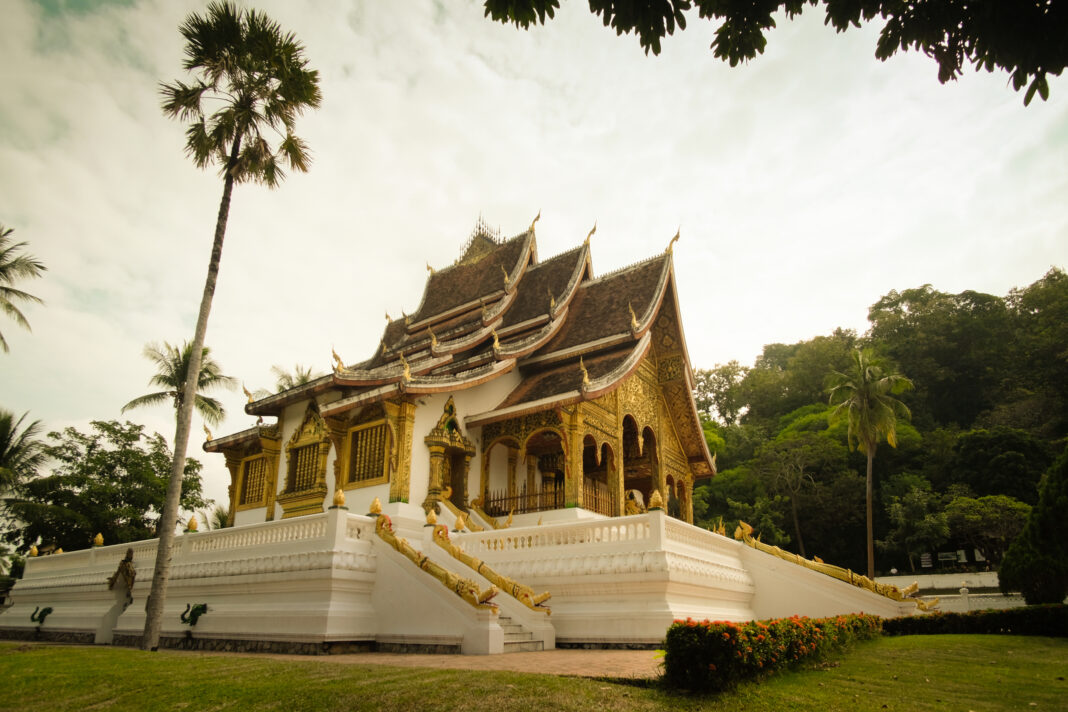A Journey of temples, baguettes, and history
Text by Anita Preston
Photographs by Anita Preston / Evensong Film
Luang Prabang is an outstanding example of the fusion of traditional architecture and Lao urban structures with those built by the European colonial authorities in the 19th and 20th centuries – UNESCO, 1995.
Luang Prabang, of course, has fantastic architecture that cannot be found in other parts of Asia. There is simply nothing like it. From the iconic sixteenth-century Wat Xiengthong with its mirrored mosaics and Wat Visoun with its amazing collection of Buddhist artifacts, the temples should not be missed. Heritage buildings with their signature shuttered windows, balconies, and pastel-colored facades can be found on every street. Walking around town one can see the old French School, the Sieng Savan Theater built in the 1950s, and many other unique structures. Some have been converted into hotels and cafes. Le Calao, Villa Santi Hotel, and The Blue House on the peninsula are particularly grand old dames.
Walking down the main road past the sweeping roof of Haw Prabang and the beaux arts style Royal Palace gives us a glimpse of the former grandeur and lifestyle of the elite.`In one part of town in a nondescript house, there is still an old wood-burning oven turning out trays of perfect golden baguettes and not a machine in sight. Men sweat and toil, laying fat floury fingers of dough onto wooden trays to prove. Later a peel will slide them through the gates of hell into a searing inferno fueled by bright orange embers of wood. When we asked the guardian of the money drawer, sitting beside the door how long this bakery has been operating, he never took his eyes off the TV hanging on the wall and said “thirty years” But Lao are famously loose with time so it could be more or it could be less. It certainly looks old.

There’s nothing more quintessentially French than a baguette. Visitors are often surprised to see the abundance of crusty fresh loaves piled up on roadside carts. Bread and coffee are a tangible legacy of some of the first European visitors to Luang Prabang. At the end of the nineteenth century, the Kingdom of Luang Prabang fell under the protectorate of France. The civil servant and eventually First Vice Consul August Pavie was one of the most important and somewhat controversial figures in Lao history. Not only a plenipotentiary, he was an explorer and cartographer and often went on missions stick in hand, barefoot, in his wide-brimmed hat. He changed the way Laos was administered and governed, working in close collaboration with the king.
Another early European visitor was Henri Mouhot.
“We found everywhere the memory of our compatriot who, by the uprightness of his character and his natural benevolence, had acquired the regard and the affection of the natives.” – Ernest Doudart de Lagrée, Leader of the French Mekong Expedition of 1866-1868.
Out in Keng Noun, Mouhot rests in a white tomb looking down on the gently ebbing Nam Khan, surrounded by lush foliage. It’s a grave with a view in a peaceful and bucolic resting place. A statue of August Pavie with a beaked nose, intense stare, wearing a hat, and barefoot, guards the spot; it is often mistaken for Mouhot himself by visitors. After discovering or rediscovering (take your pick) Angkor Wat, Henri spent some time in Luang Prabang before succumbing to malaria. Scholars say that Mouhot’s body was probably washed away during flooding but the grave marks the spot very close to where he died in 1850. If you choose to pay respects to this early pioneer, the drive out to Keng Noun passes by Wat Phon Pao with its golden spires housing a collection of vivid Buddhist frescoes and old tomes, worth a stop. Henri is laid to rest close to the new railway station and it is an interesting drive through villages and along the shores of the Nam Khan.

On the other side of town lies The Grand Luang Prabang Hotel in a gorgeous setting containing the villa of the former Viceroy and Prince of Laos, Phetsarath Rattanavongsa. His villa on the hotel grounds has a commanding view overlooking the Mekong. Many of the prince’s personal items are still there and fascinating black and white photographs line the walls, showing the prince at the Villa and performing his official duties, shaking hands with guests at the boat pier, group photos with his staff, taking a road trip in his fatigues to the surrounding villages. His clothes are laid out on the closet shelves, his jacket lies over the back of a chair, gilded teacups sit on a tray and flowers are arranged in vases. It’s almost as if the prince could walk through the door at any moment. This location is fascinating for anyone who wants to learn more and dig a little deeper into the history of Laos and the setting is lovely.
Moving on a little later from the ancien régime, myths about the “Old French bridge” spanning the Nam Khan abound. “It’s a hundred years old.” “It was built by Eiffel”. A US marine walked into a bar in 2009 and told the story of how he came to Laos in the 1960s and said he built that very bridge. Sounds like the opening for a joke, but which is it? Old or not so old. Information is scarce but documents show the allotment of US funds for building a bridge across the Nam Khan in 1967. The photo collection of Joel Halpern, a USAID worker, housed at the University of Madison Wisconsin shows the bridge but that’s 10 years earlier. Perhaps we can figure it out one day. Online there are some fantastic catalogues and a plethora of old photos about Luang Prabang housed in academic libraries. Coolies, men in white hats, and dignitaries are frozen in time. It’s worth looking to see how much and how little Luang Prabang has changed in the last 150 years, compared to the rest of Southeast Asia.
GETTING THERE
Lao Airlines has daily flights to Luang Prabang from Vientiane, Hanoi, Bangkok, and Chiang Mai.



 ລາວ
ລາວ
